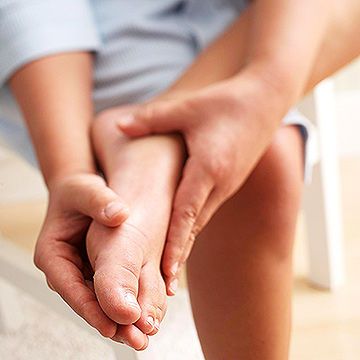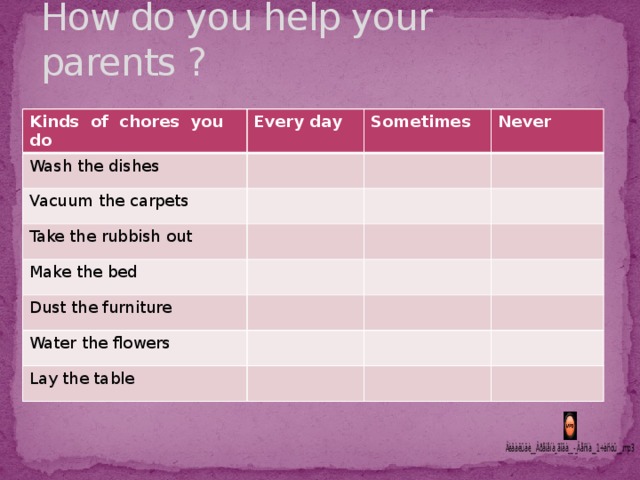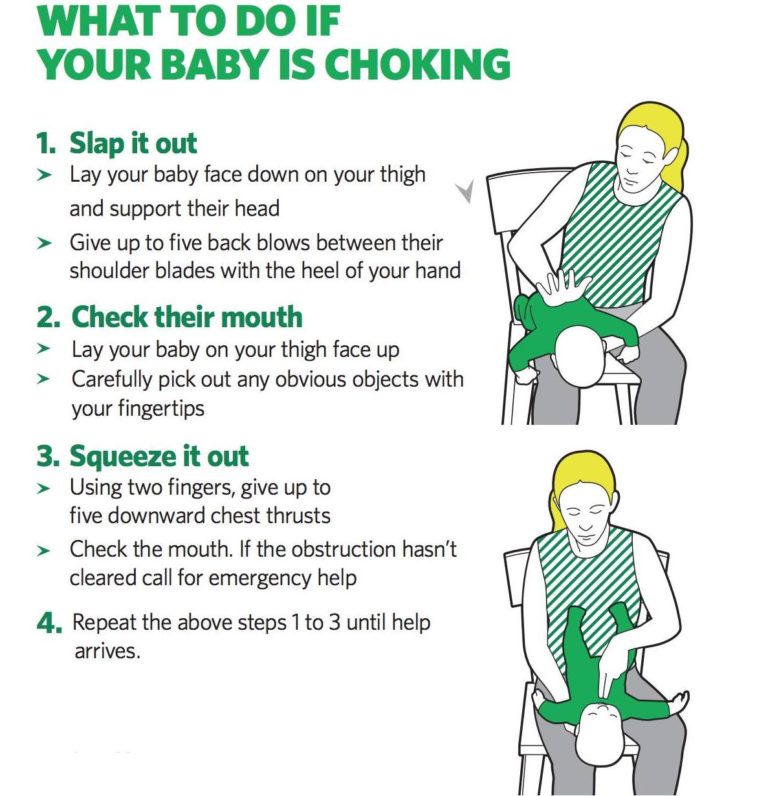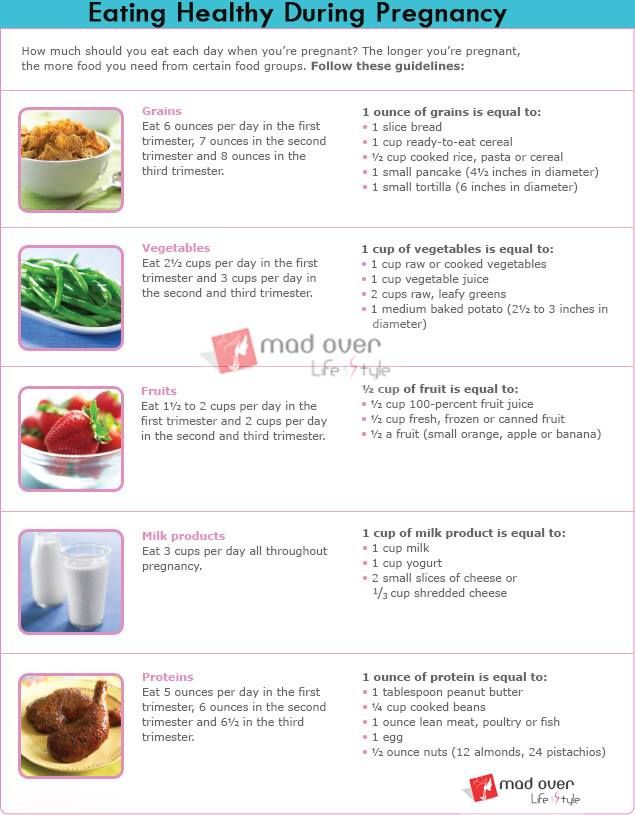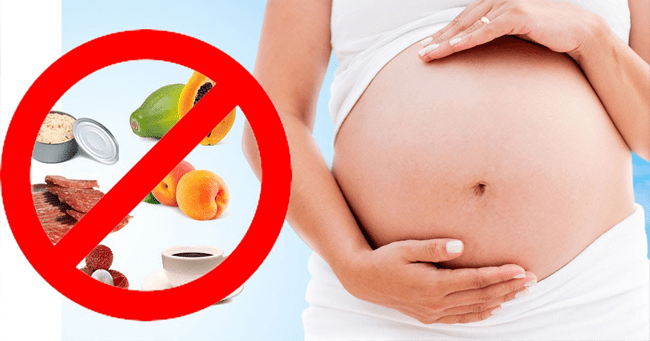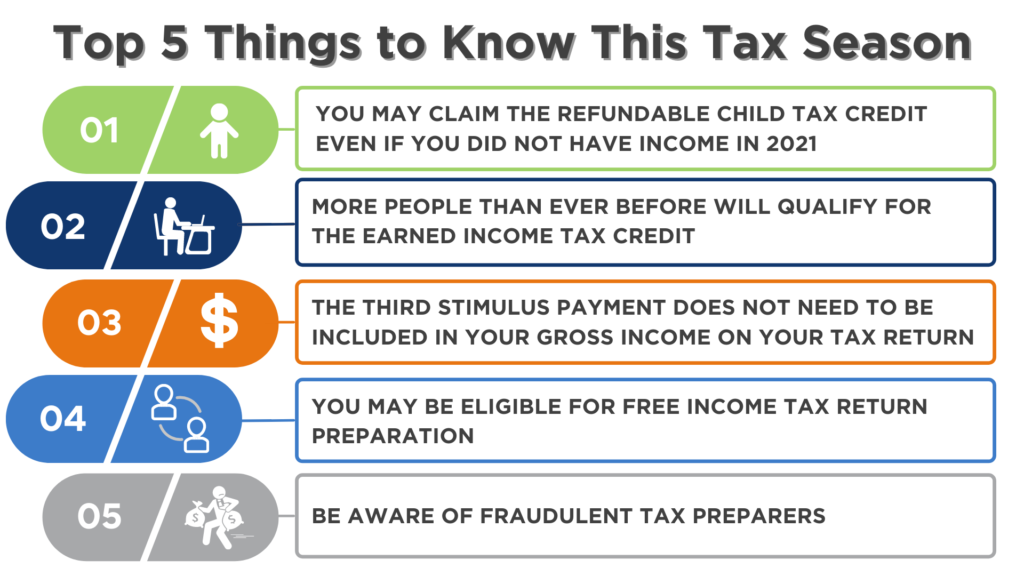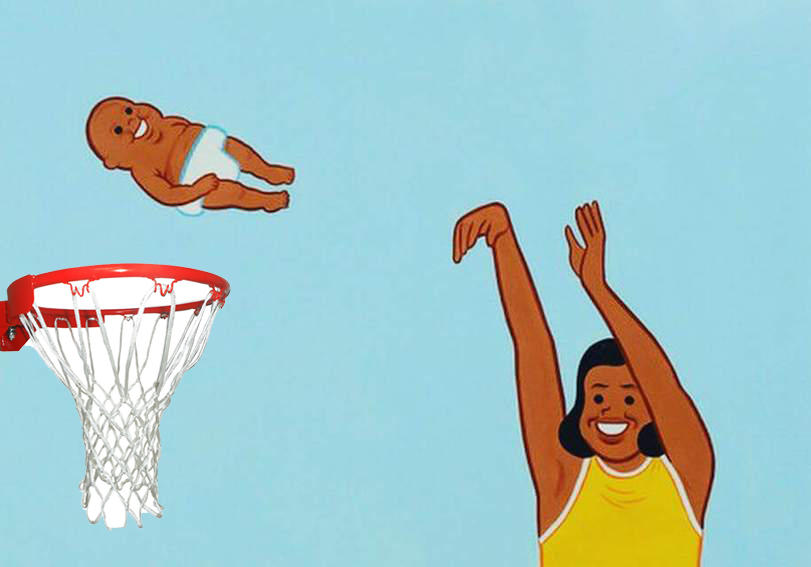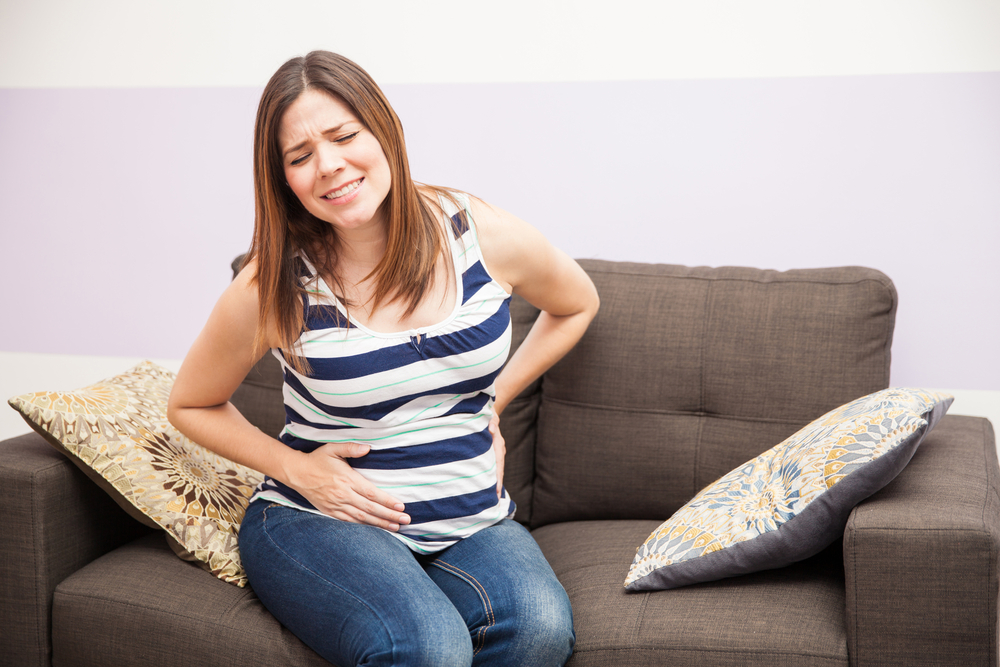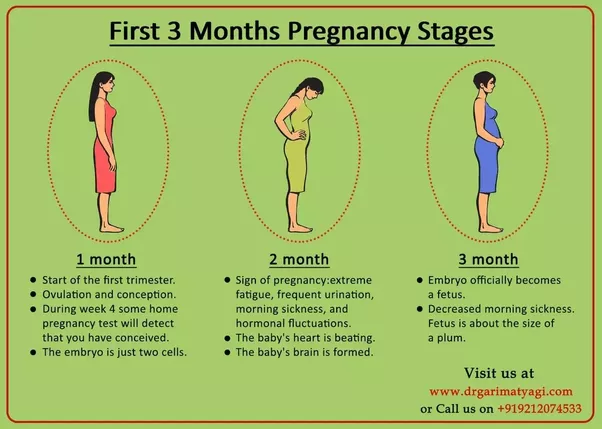Pregnancy and swelling hands
Swollen ankles, feet and fingers in pregnancy
Swelling in your ankles, legs, feet and fingers is common during pregnancy.
Causes of swelling
As your womb grows, it can put pressure on the circulation to the lower part of your body. This means that blood doesn't flow as well as usual, which can cause fluid to build up in your lower limbs.
During pregnancy your body also holds more fluid than usual. This extra fluid can collect in your legs and ankles, which can cause swelling.
It can also sometimes collect in your hands and fingers. This can cause them to swell. It may mean that you can no longer comfortably wear jewellery like rings.
When to get medical help
Swelling that happens gradually can be uncomfortable, but it's not harmful to you or your baby.
Swelling that happens suddenly or with other symptoms could be a sign of pre-eclampsia. This can cause problems for pregnant women and babies if it's not diagnosed and treated.
Always see your GP if you suddenly become swollen or have other symptoms.
High blood pressure in pregnancy and pre-eclampsia
Urgent advice: Contact your GP immediately if you have:
- sudden swelling of your face, hands or feet
- blurred vision or flashing lights before your eyes
- a severe headache
- severe pain just below your ribs
- vomiting after 24 weeks of pregnancy
Swelling in pregnancy usually affects both of your legs, ankles or feet.
Urgent advice: Always see your GP if you have:
- one leg that is swollen
- one calf that is red, hot or tender
These could be signs of a deep vein thrombosis, or DVT (blood clot).
How to reduce swelling
If you have gradual swelling and no other symptoms, there are things you can do that might help.
These include drinking plenty of water and being as active as possible. Exercise during pregnancy helps your circulation.
Swelling in your hands and fingers
There are various things you can do to reduce gradual swelling in your hands and fingers.
Use cold compresses on your hands and fingers if they are swollen. For example, wet a flannel or face cloth with cold water and hold it around the swollen part.
Try not to wear anything that is too tight on your arms or wrists. For example, tight watches or bracelets.
If you notice that your rings are becoming tight, it's probably a good idea to take them off.
Tell your GP, midwife or obstetrician if you have any pain or tingling in your wrists or fingers.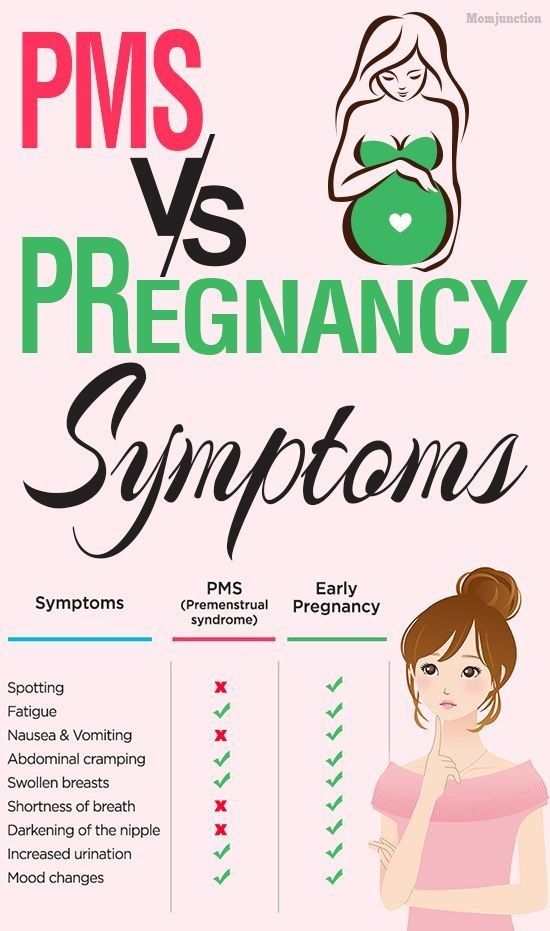 This could be a sign of carpal tunnel syndrome.
This could be a sign of carpal tunnel syndrome.
Swelling in your legs, ankles and feet
To treat gradual swelling in your legs, ankles and feet, you should:
- avoid standing for long periods of time
- put your feet up when you can
- not cross your legs
- wear comfortable shoes
- drink plenty of water
- stay as active as possible
Foot exercises can help reduce ankle and foot swelling, and reduce leg cramps.
- Bend and stretch your foot up and down 30 times.
- Rotate your foot 8 times in one direction and 8 times in the other direction.
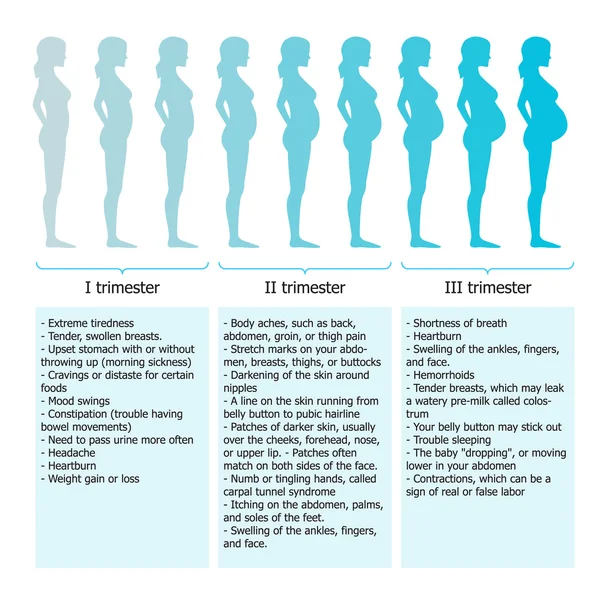
Page last reviewed: 17 May 2019
Next review due: 17 May 2022
Swollen ankles, feet and fingers in pregnancy
It's normal to get some swelling in pregnancy, particularly in your legs, ankles, feet and fingers.
It's often worse at the end of the day and further into your pregnancy.
Swelling that comes on gradually is not usually harmful to you or your baby, but it can be uncomfortable.
A sudden increase in swelling can be a sign of pre-eclampsia, a condition that needs to be monitored as soon as possible.
Non-urgent advice: Call your midwife, GP or labour ward immediately if you have:
- a sudden increase in swelling in your face, hands or feet
- a very bad headache
- problems with your vision, such as blurring or flashing lights in your eyes
- severe pain just below your ribs
- vomiting with any of these symptoms
These could be symptoms of pre-eclampsia, which can lead to serious complications if it's not monitored and treated.
Normal pregnancy swelling
Swelling is caused by your body holding more water than usual when you're pregnant.
Throughout the day the extra water tends to gather in the lowest parts of the body, especially if the weather is hot or you have been standing a lot.
The pressure of your growing womb can also affect the blood flow in your legs. This can cause fluid to build up in your legs, ankles and feet.
What can help to reduce swelling
Try to:
- avoid standing for long periods
- wear comfortable shoes and socks – avoid tight straps or anything that might pinch if your feet swell
- try to rest with your feet up as much as you can
- drink plenty of water – this helps your body get rid of excess water
- exercise – try to take regular walks during the day or doing foot exercises
Foot exercises
You can do foot exercises sitting or standing.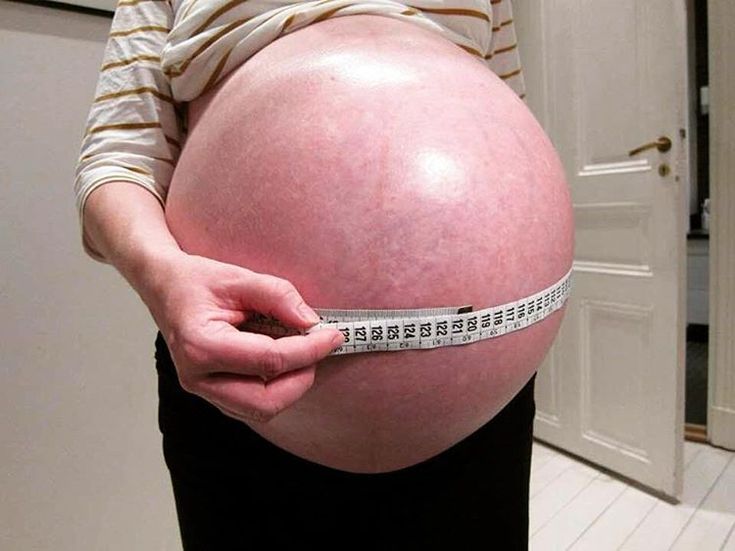 They improve blood circulation, reduce swelling in the ankles, and prevent cramp in the calf muscles:
They improve blood circulation, reduce swelling in the ankles, and prevent cramp in the calf muscles:
- bend and stretch your foot up and down 30 times
- rotate each foot in a circle 8 times one way and 8 times the other way
Get more tips on exercising in pregnancy.
Page last reviewed: 10 March 2021
Next review due: 10 March 2024
what to do and how to get rid of edema in the 2nd and 3rd trimesters
A fairly large percentage of women experience edema during pregnancy: moderate edema is observed in 50-80% of pregnant women with a normal pregnancy (1). Often they indicate an excessive accumulation of fluid in the tissues of the body or a violation of the outflow of blood from the pelvic organs - this should not be feared. But there are cases when swelling is the result of health problems. In this case, both the condition of the mother and the condition of the baby are at risk.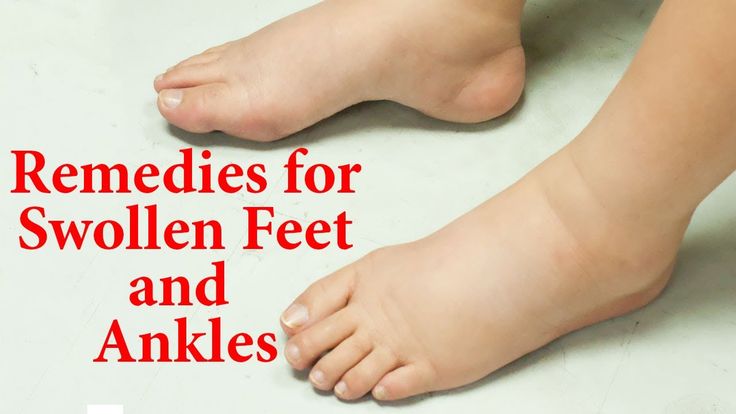 It is important to consult a specialist in a timely manner and not self-medicate. nine0003
It is important to consult a specialist in a timely manner and not self-medicate. nine0003
Types of edema
Edema during pregnancy is divided into physiological and pathological. The former are considered natural and do not pose a health hazard. But pathological edema speaks of problems with various organs: for example, the kidneys or the thyroid gland. We will talk about the physiological edema of various parts of the body.
Photo: pixabay.comSwelling of the legs
The legs most often begin to swell after the fifth or sixth month of pregnancy. Severe swelling is noticeable on the calves, ankles and feet: the upper part of the legs almost never swells. Pregnant women may also experience an increase in leg size due to swelling. This happens under the action of the hormone relaxin, which is responsible for the relaxation of the ligaments. Due to its release, the distance between the ligaments becomes larger and the feet swell a little. (2)
Edema of the face
They occur due to an increase in the level of estrogen in the blood.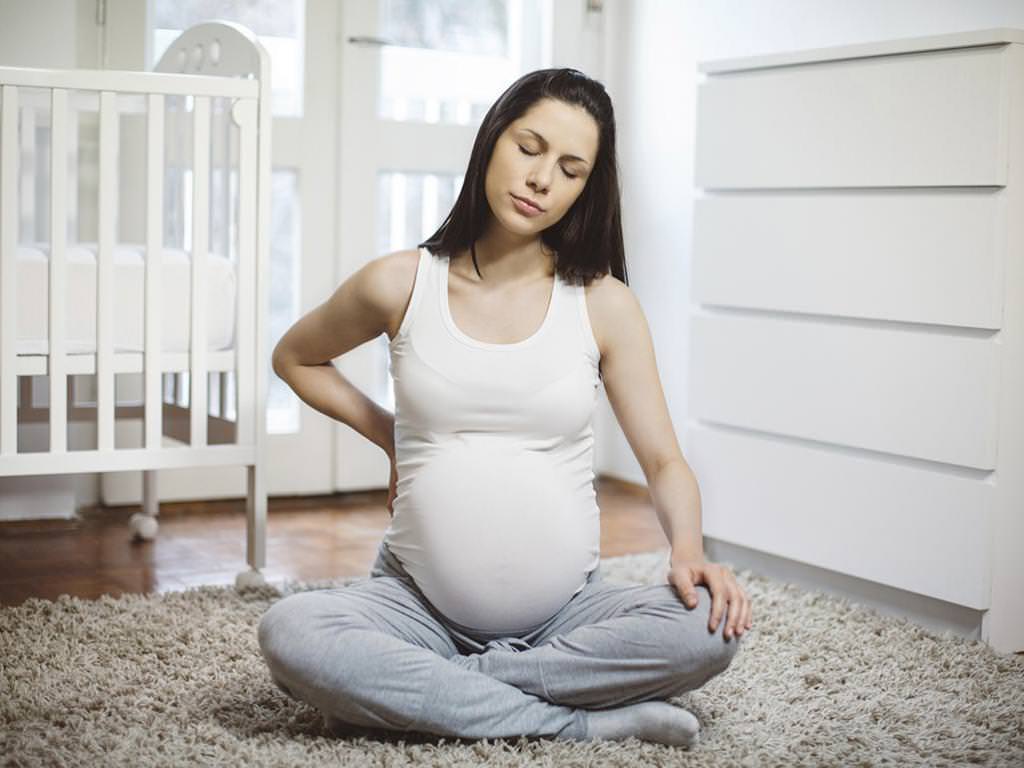 This hormone is responsible for sexual development, reproductive function and the skeletal system. Facial swelling becomes more noticeable when the level of estrogen becomes higher than normal: the nose, lips, and upper part of the face may swell. But if a pregnant woman has severe swelling under her eyes, this is a reason to seek the advice of a specialist. The so-called bags under the eyes can indicate problems in the functioning of the kidneys. nine0003
This hormone is responsible for sexual development, reproductive function and the skeletal system. Facial swelling becomes more noticeable when the level of estrogen becomes higher than normal: the nose, lips, and upper part of the face may swell. But if a pregnant woman has severe swelling under her eyes, this is a reason to seek the advice of a specialist. The so-called bags under the eyes can indicate problems in the functioning of the kidneys. nine0003
Swelling of the hands
Quite often hand edema appears in the third trimester of pregnancy. A woman cannot wear rings, there is a strong tension when clenching her fists, and after sitting work, her hands become very numb. The duration of the manifestation of edema is individual, but if there is, for example, swelling of the hands and face that cause discomfort, you should consult a doctor.
Mucosal and skin edema
A pregnant woman may experience difficulty in breathing without other accompanying symptoms.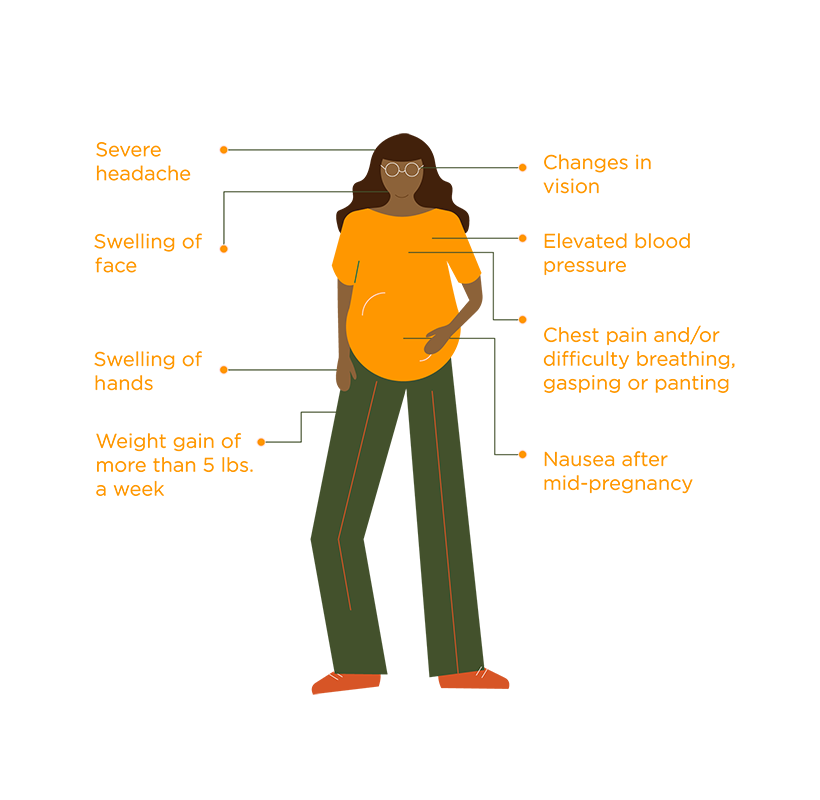 Mucosal edema is not so common, but it still happens: with a physiological manifestation, you should not be afraid of it. The mucous membranes also swell due to the accumulation of fluid in the intercellular space. A similar thing happens with the skin: traces of clothing remain on it, and the skin itself looks loose and devoid of moisture. If the swelling of the skin covers a large area, and when pressed, a distinct hole remains, it is necessary to visit a specialist. nine0003 Photo: pixabay.com
Mucosal edema is not so common, but it still happens: with a physiological manifestation, you should not be afraid of it. The mucous membranes also swell due to the accumulation of fluid in the intercellular space. A similar thing happens with the skin: traces of clothing remain on it, and the skin itself looks loose and devoid of moisture. If the swelling of the skin covers a large area, and when pressed, a distinct hole remains, it is necessary to visit a specialist. nine0003 Photo: pixabay.com
In these cases, swelling is a natural condition that accompanies pregnancy. But swelling can be the cause of the development of serious diseases. Therefore, it is important to start treatment on time in order to prevent the threat to the life of the mother and child.
When edema occurs
In the first three months of pregnancy, a woman in most cases does not experience edema: they begin to appear in the second and third trimester.
Second trimester
Puffiness appears on the arms, legs and face, most often the hands suffer from edema from 13 to 28 weeks.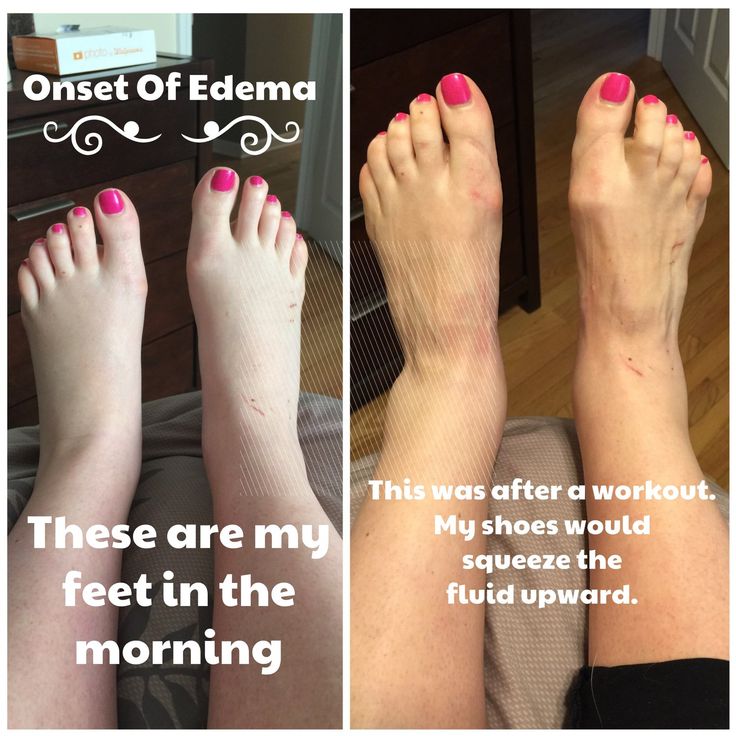 Fluid retention is often reflected in the face. Swelling appears on the cheeks, nose and upper eyelids. It is necessary to monitor how much fluid is consumed and how much is excreted: if there is very little urine, you should consult a doctor. Such a condition may indicate not only puffiness, but also toxicosis of the second trimester. nine0003
Fluid retention is often reflected in the face. Swelling appears on the cheeks, nose and upper eyelids. It is necessary to monitor how much fluid is consumed and how much is excreted: if there is very little urine, you should consult a doctor. Such a condition may indicate not only puffiness, but also toxicosis of the second trimester. nine0003
- Edema can appear both in early and later pregnancy due to venous-lymphatic insufficiency. During pregnancy, a restructuring of the hormonal background occurs, progesterone disrupts vascular permeability, and as a result, water is retained in the tissues. Most often, the arms and legs swell, from where it is harder for fluids to return, - adds Nina Antipova, obstetrician-gynecologist, gynecologist-endocrinologist .
Third trimester
From the beginning of the seventh month of pregnancy until the ninth month, a woman may experience swelling of the extremities: but most often it is, of course, the legs. The shins, ankles, calves swell much more strongly in the afternoon, with strong pressure, a slightly noticeable fingerprint is formed.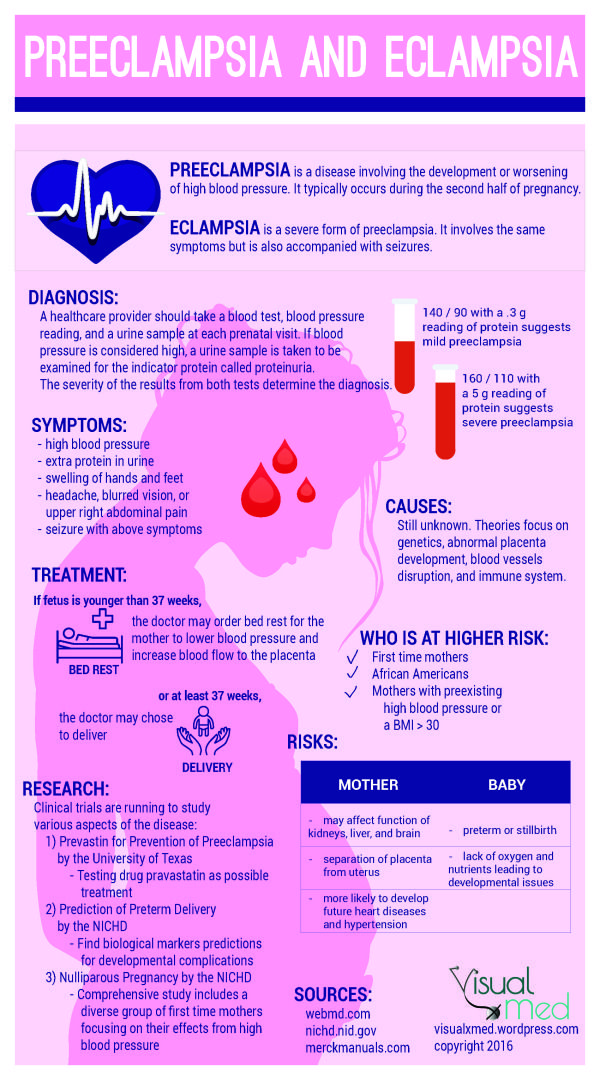 Such edema is aggravated by hot weather, eating salty foods, and prolonged standing. nine0003
Such edema is aggravated by hot weather, eating salty foods, and prolonged standing. nine0003
What to do if edema occurs
Physiological edema affects no more than two areas of the body. For example, hands and feet, or swelling of the eyelids and feet. Usually such edema is not very pronounced and subsides by the next day. In this case, you do not need to worry and consult a doctor: the puffiness will subside on its own. (3)
If a woman feels that breathing is difficult, or edema appears in the early morning and does not disappear the next day, the amount of urine begins to decrease sharply, and, on the contrary, weight increases, it is worth going to a specialist for a consultation. nine0003 Photo: @shvets-production, pexels.com
How to get rid of edema
With natural manifestations of edema, it is important to monitor nutrition, do not include a lot of fried and fatty foods in the diet, and limit salt intake. In case of swelling of the legs, it is worth spending less time in a standing position, giving them a rest.
If it is possible to perform light exercises, do exercises, then it is worth paying attention to physical activity. Despite the fact that during edema water accumulates in the body, it is important for a pregnant woman to drink enough liquid - 1.5-2 liters of purified water. Compression underwear will also help get rid of edema, which alleviates symptoms and helps not only with swelling, but also with varicose veins. nine0003
Medicines may only be used during pregnancy with the permission of a doctor. Therefore, in the event of an increase in symptoms or their prolonged manifestation, you should not drink pills on your own: they should be prescribed by a specialist.
Popular questions and answers
Popular questions were answered by Nina Antipova, obstetrician-gynecologist, gynecologist-endocrinologist, hemostasiologist at REMEDI Reproduction Clinic.
Why are edema dangerous?
— Edema can be a concomitant symptom of other diseases, such swelling is also called pathological. To distinguish it from physiological edema will help the doctor during the examination. That is why it is important to visit a specialist systematically, and not only if necessary. nine0003
To distinguish it from physiological edema will help the doctor during the examination. That is why it is important to visit a specialist systematically, and not only if necessary. nine0003
After examining the veins of the lower extremities and lymph nodes, the doctor may additionally prescribe medications that improve vascular permeability, as well as wearing compression underwear. If venous-lymphatic insufficiency can lead to deep vein thrombosis of the lower leg, then injections are prescribed. Risk factors include age, obesity, smoking, predisposition to thrombosis, individual characteristics with the onset of pregnancy.
Edema may occur due to preeclampsia. The complication occurs after the 20th week, in the second half of pregnancy: swelling of the extremities and face appears, blood pressure rises, and an increased amount of protein is present in the urine. Preeclampsia occurs due to disruption of the placenta, as a result of which biologically active substances begin to enter the body, which lead to disruption of the cardiovascular system and blood supply to the organs. Complications in preeclampsia can be very serious: liver dysfunction, stroke, coma, placental abruption, bleeding, acute hypoxia, intrauterine death. You can prevent the development of preeclampsia at the first screening at the 12-13th week of pregnancy. It is important to see a doctor regularly. nine0003
Complications in preeclampsia can be very serious: liver dysfunction, stroke, coma, placental abruption, bleeding, acute hypoxia, intrauterine death. You can prevent the development of preeclampsia at the first screening at the 12-13th week of pregnancy. It is important to see a doctor regularly. nine0003
Swelling may be the result of a chronic disease. Women with such a diagnosis are registered with specialized specialists who are already familiar with the medical history.
What is the prevention of edema?
To reduce and prevent swelling, it is necessary to review the diet: limit or completely eliminate salty and spicy - seasonings retain fluid in the body. If there are no contraindications, then regularly go to the pool and massage.
What foods relieve swelling? nine0009
You should include more fresh vegetables and fruits in your diet, drink clean filtered water. Foods low in sodium have a diuretic effect: rice, pasta. You can eat lean fish or meat, it is better to boil the chicken.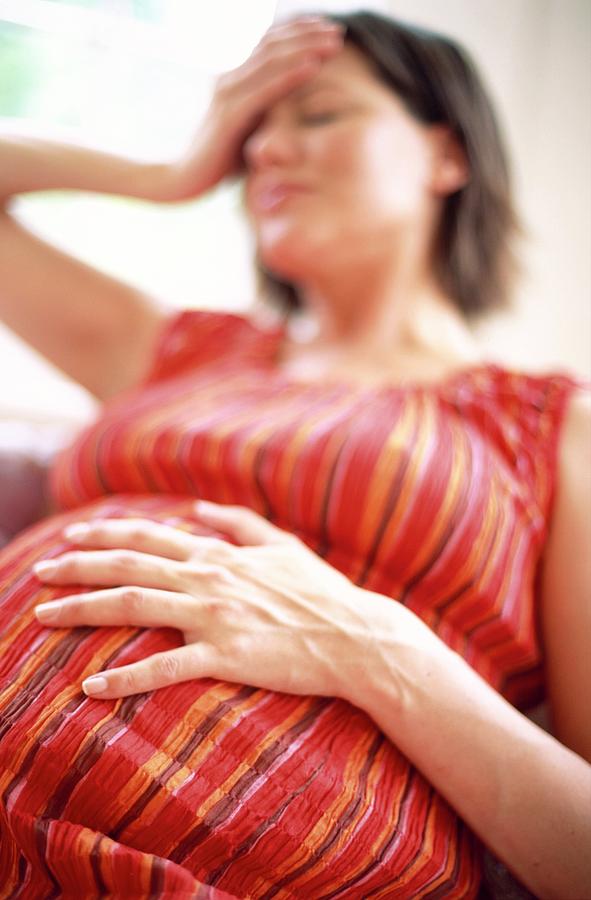 Pay attention to foods high in potassium. These are dairy products, green tea, raisins, dates.
Pay attention to foods high in potassium. These are dairy products, green tea, raisins, dates.
Sources
- Edema in pregnant women: a disease or a norm? V.E. Radzinsky, T.V. Khapova et al./2014. URL: https://cyberleninka.ru/article/n/oteki-u-beremennyh-zabolevanie-ili-norma/viewer
- What causes ankle swelling during pregnancy — and what can I do about it? Yvonne Butler Tobah/ 2020. URL: https://www.mayoclinic.org/healthy-lifestyle/pregnancy-week-by-week/expert-answers/swelling-during-pregnancy/faq-20058467
- Swelling During Late Pregnancy. By Emily E. Bunce/2021. URL: https://www.msdmanuals.com/home/women-s-health-issues/symptoms-during-pregnancy/swelling-during-late-pregnancy
Edema (dropsy) during pregnancy
nine0002 Edema during pregnancy It is normal for swelling to occur during pregnancy, especially in the legs, ankles, feet and fingers.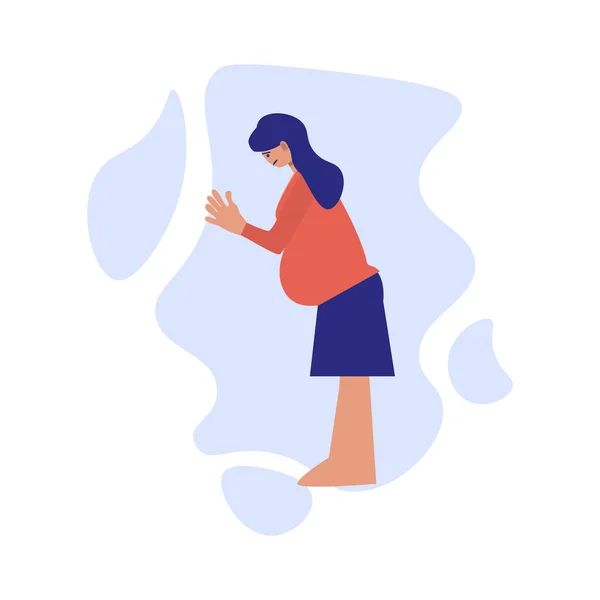 It often gets worse at the end of the day. Swelling that comes on gradually is usually not dangerous for you or your baby, but it can be uncomfortable.
It often gets worse at the end of the day. Swelling that comes on gradually is usually not dangerous for you or your baby, but it can be uncomfortable.
If you notice swelling in your hands, ankles and feet, try not to worry. Swelling of the hands, ankles, and feet is very common during pregnancy, especially in the third trimester. Swelling is caused by your body holding on to more fluid than usual. You can get rid of swollen hands, feet and swollen ankles by staying active and drinking plenty of water. Sometimes swollen hands and feet can be a sign of something more serious. nine0003
For example, if swelling bothers you in the last trimester of pregnancy and persists. During this period of pregnancy, many expectant mothers experience impaired lymph and blood flow. This contributes to fluid retention in the tissues and the formation of edema. As a result, dropsy of pregnancy develops .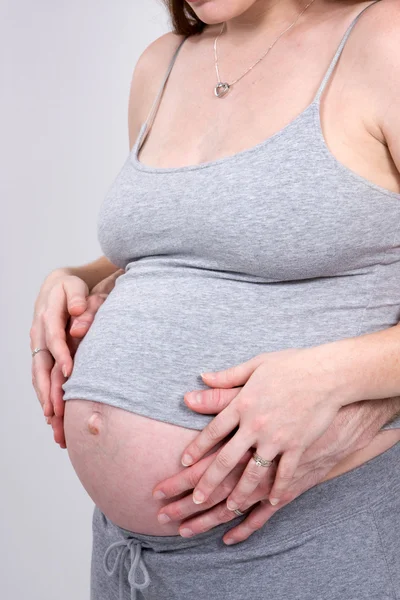
Dropsy during pregnancy
This is a form of toxicosis, in which edema does not disappear from the woman's body, but only increases in size (weight is growing rapidly), in the absence of protein in the urine and normal blood pressure. Violation of water-salt metabolism in the body can pose a serious danger to the health of the expectant mother and baby. In the absence of proper treatment, dropsy can develop into preeclampsia (a severe form of toxicosis). Therefore, at the first signs of this disease, you should immediately go to the hospital. nine0003
Dropsy is considered an early manifestation of gestosis, characterized by fluid retention in the body and the appearance of edema.
The following stages are distinguished in dropsy:
-
1 Stage of dropsy - swelling of the legs (stop and lower legs)
-
2 Stages of dropsy - swelling of the legs and anterior abdominal wall of the abdomen
-
Stages of dropsy - swimming stages - swelling , abdomen, hands and face
-
Stage 4 dropsy - generalized edema
Below we will give you additional tips to reduce pregnancy swelling and explain when you should still be concerned about swelling during pregnancy.
Causes of swelling (dropsy) during pregnancy
As your baby grows, the expanding uterus presses on the blood vessels in the pelvic area.
Particularly affected are the large veins on the right side (inferior vena cava), which receive blood from the lower extremities. The pressure from your baby and uterus slows down blood flow in this area and causes water to pool from your blood vessels into the tissues of your legs and feet. This can cause swelling of the ankles and legs. nine0003
Your hands may also swell towards the end of your pregnancy. If you wear rings, they can put pressure on your fingers and you may have to give them up for a while. Hot weather and standing for long periods of time can also increase swelling.
Up to 80 percent of healthy pregnant women experience edema in late pregnancy.
Diagnosis of dropsy in pregnancy
nine0004 When should I be concerned about swelling during pregnancy? Swelling during pregnancy is normal and although annoying, it is usually not a big deal.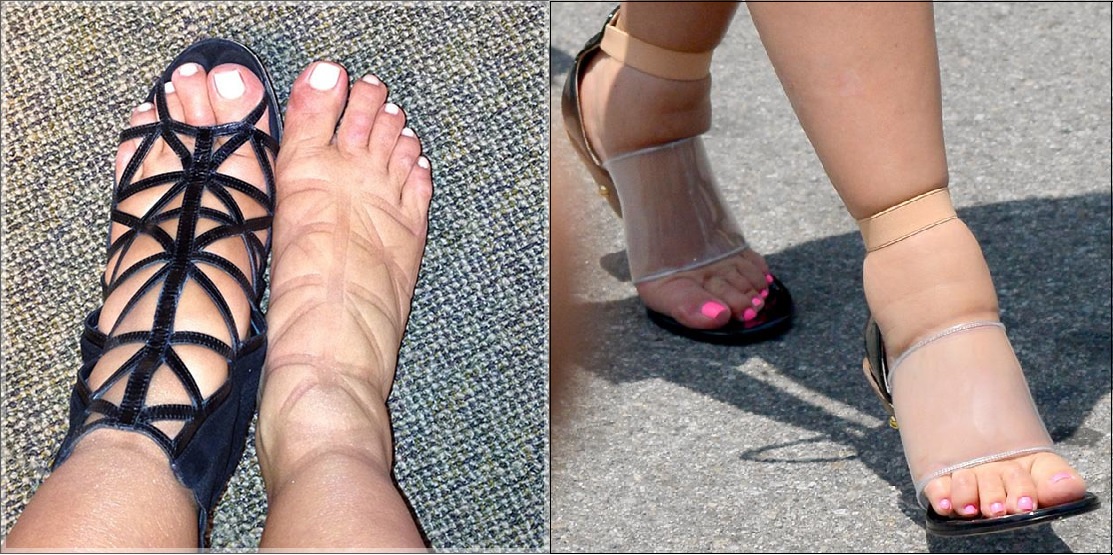 However, very rarely it can still be a sign of a serious illness.
However, very rarely it can still be a sign of a serious illness.
Edema can develop into a form of toxicosis such as dropsy. This can be determined by a sharp increase in weight. Of course, all pregnant women gain weight throughout pregnancy and swelling can also appear periodically and this is absolutely normal, but it is necessary to ensure that the indicators on the scales do not exceed 200-300 grams per week. Also common signs that dropsy is developing can be called:
-
infrequent urination;
-
constant feeling of thirst;
-
leather gloss;
-
puffiness;
-
increased fatigue.
If you experience sudden or severe swelling of your hands, face, or feet, call your doctor or midwife right away. This may be a sign of preeclampsia, which is a serious condition that can harm you and your baby and also affect your blood pressure. nine0003
Call your healthcare provider if you notice excessive and/or sudden swelling in your feet or ankles, especially if it is accompanied by any of the following signs of preeclampsia:
-
Changes in vision, blurred or bright spots
-
Pain in the upper abdomen
-
Shortness of breath
-
Swelling of hands or face more than moderate
-
Nausea or vomiting after 20 weeks of pregnancy
Danger of edema in pregnancy
If only one leg is swollen and hot, seek medical attention immediately. There is a small chance it could be due to a blood clot. This is called deep vein thrombosis (DVT) and you will need medical attention.
There is a small chance it could be due to a blood clot. This is called deep vein thrombosis (DVT) and you will need medical attention.
Symptoms of DVT include:
-
pain, swelling, or tenderness in one of the legs, usually the lower leg
-
severe pain and warm skin in the area
-
red or discolored skin, especially on the calves
Both preeclampsia and DVT can be dangerous for you and your baby, but they can be managed. The sooner you get tested, the better.
Risk of dropsy in pregnancy
What can be done to reduce swelling?
Staying active can help reduce swelling because it stimulates circulation. Try incorporating a couple of walks into your daily routine, or making a few changes to your regular habits, such as getting off the bus a stop early and walking the rest of the way, or taking the stairs instead of the elevator. nine0003
nine0003
You may have heard that diuretics help your kidneys pass water and sodium so you can get rid of excess fluid in your body. However, they are not recommended for normal pregnancy edema, as by washing out important elements, diuretic tablets can harm the fetus.
How to reduce swelling during pregnancy
Your doctor may only suggest that you take them if you have other complications such as heart disease or kidney problems. nine0003
Instead of using diuretics, try the following methods for edema:
-
Drink plenty of water as this will help your body eliminate excess water.
-
Try wearing compression garments, stockings or knee socks. This will especially help relieve your swollen feet and swollen ankles.
-
Get a professional foot massage or ask your partner for a relaxing hand or foot massage.
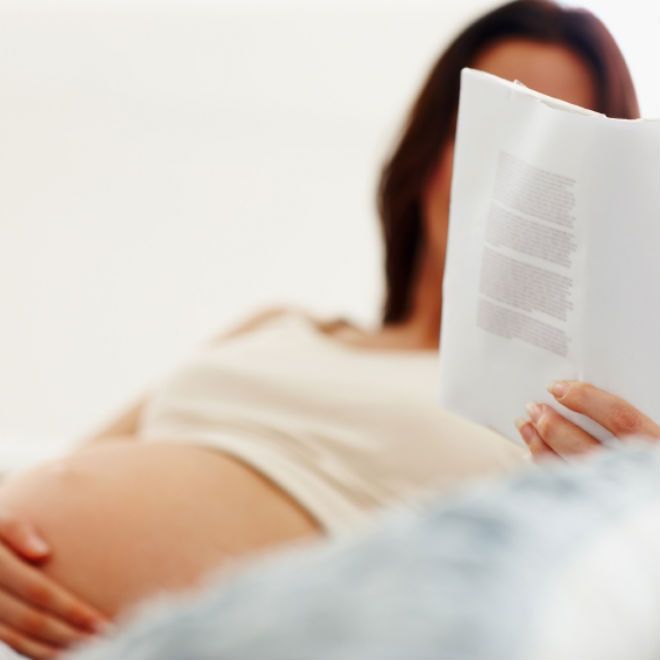 nine0003
nine0003
Tips for swelling during pregnancy
-
Raise your legs whenever possible, as this will improve circulation. At work, keep a footstool or box under your desk. At home and in bed, try to lie on your side, as this reduces pressure on the inferior vena cava and is safer for your baby. Place a pillow under your ankles to elevate your legs at night.
-
Try not to stand on your feet for too long. Take regular breaks from work. Your employer is required to conduct a risk assessment of your position and do everything possible to reduce the health risks to you and your child.
-
Leg exercises can help reduce ankle swelling. Bend the leg up and down 30 times, then twist it eight times in one direction and eight times in the other. Repeat with the other leg.
 You can apply this technique to your swollen hands as well. nine0003
You can apply this technique to your swollen hands as well. nine0003 -
Swimming in pool for at least 20 minutes may also help.
-
Wear comfortable shoes and socks . You can buy socks with specially designed ankle cuffs that won't compress if your feet get a little swollen. Wearing larger, wider, or slip-on shoes can help you feel more comfortable.
When will swelling disappear?
Try to remember that swelling will not last forever. Like many other discomforts during pregnancy, normal swelling should go away a few weeks after delivery.
If, like some women, you find that you have more swelling after having a baby than during pregnancy, following the same tips and exercises can help you reduce it. It should be gone by the time your baby is six to eight weeks old.